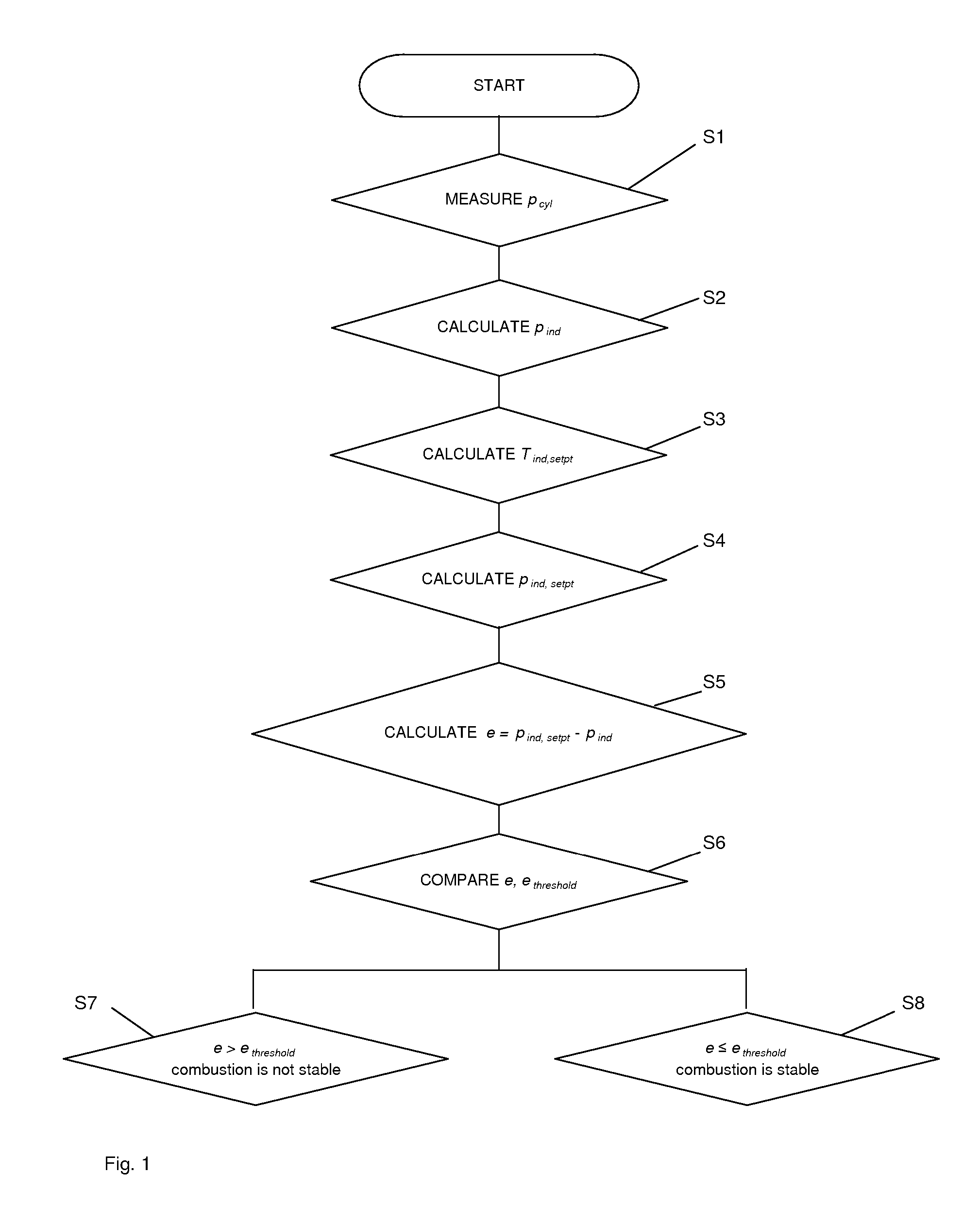Method for monitoring combustion stability of an internal combustion engine
a technology of internal combustion engine and stability monitoring, which is applied in the direction of electrical control, process and machine control, instruments, etc., can solve the problems of high nosub>x/sub>, high nosub>x/sub>, particulate emissions, and thermal loss, so as to reduce the number of misfirings due to unstable combustion, the effect of lowering the burnt gas mass fraction and increasing the temperature of the intake air charg
- Summary
- Abstract
- Description
- Claims
- Application Information
AI Technical Summary
Benefits of technology
Problems solved by technology
Method used
Image
Examples
first embodiment
[0063]FIG. 1 shows the flow diagram of a first embodiment according to the invention, wherein in a first step S1 in-cylinder pressure pcyl is measured and used for calculating indicated pressure pind within a second step S2. The torque set point Tind,setpt is determined from the accelerator pedal position (αped), the torque losses and, if necessary, additional signals like engine speed, gear and the like (S3).
[0064] The torque set point Tind,sept is used to determine the set point for indicated pressure pind,setpt in a fourth step S4. For further processing, the deviation e between the set point pind,setpt and the actual value of the indicated pressure pind is calculated (S5).
[0065] The resulting deviation e=Δpind=(Pind−pind,setpt) is compared with a predetermined deviation threshold ethreshold in order to decide whether the combustion is stable or not (S6).
If
|e|>ethreshold
it is assumed that the combustion is not stable (S7a) and has to be stabilized by changing operating cond...
second embodiment
[0066]FIG. 2 shows the flow diagram of a second embodiment according to the invention.
[0067] Within the first step S1 in-cylinder pressure pcyl is measured for two consecutive cycles k, k+1. The respective pressure traces pcyl,k (θ) and pcyl,k+1 (θ) are used to calculate the actual value of indicated pressure pind,k+1 and pind,k for both cycles by integration (S2,S3).
[0068] In practice it will be more convenient to measure in-cylinder pressure pcyl once for one specific cycle and to calculate and store the respective indicated mean effective pressure pind,k for further processing. By doing the same for the consecutive cycle k+1, indicated mean effective pressure is obtained for two consecutive cycles, namely pind,k and pind,k+1, not by recalculating pind each time but by storing the previously calculated value for pind for further processing.
[0069] For further processing the change Δe in deviation between the two cycles in question is calculated (S4) by using the following equatio...
PUM
 Login to View More
Login to View More Abstract
Description
Claims
Application Information
 Login to View More
Login to View More - R&D
- Intellectual Property
- Life Sciences
- Materials
- Tech Scout
- Unparalleled Data Quality
- Higher Quality Content
- 60% Fewer Hallucinations
Browse by: Latest US Patents, China's latest patents, Technical Efficacy Thesaurus, Application Domain, Technology Topic, Popular Technical Reports.
© 2025 PatSnap. All rights reserved.Legal|Privacy policy|Modern Slavery Act Transparency Statement|Sitemap|About US| Contact US: help@patsnap.com



